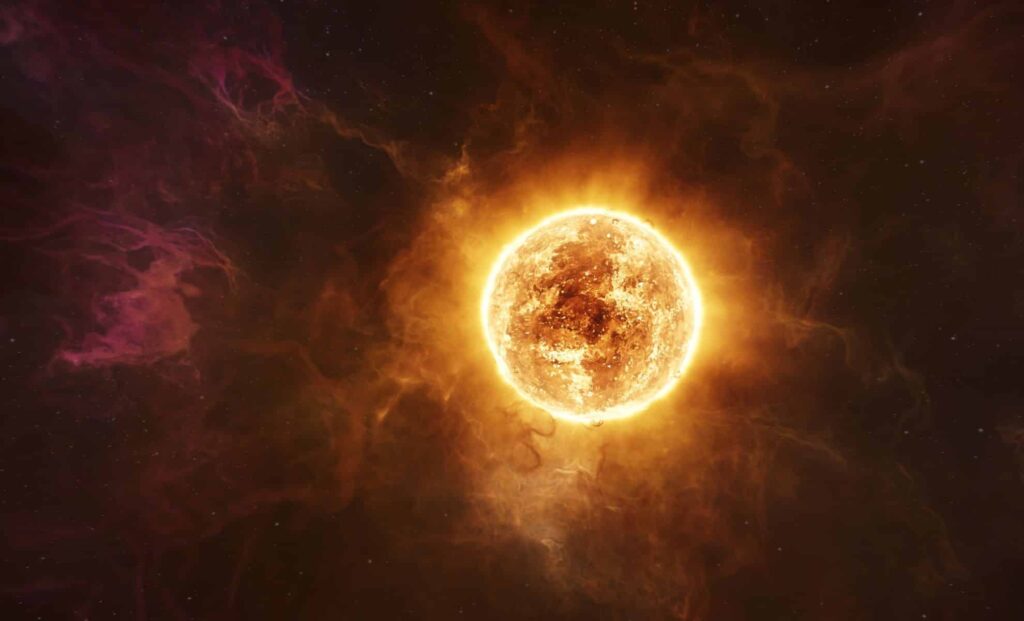
CAMBRIDGE, MASS. – In a groundbreaking revelation, scientists have discovered that stellar flares can dramatically transform the atmospheres of planets within days, including Earth.
The Power of Stellar Flares
Stellar flares are explosive phenomena in the atmospheres of stars, resulting from the abrupt release of magnetic energy. These outbursts emit high-energy radiation, such as ultraviolet light and X-rays, across vast cosmic expanses. The impact of stellar flares is especially significant on young, magnetically active stars like red dwarfs, which experience more frequent and intense flares compared to our Sun.
Red dwarfs, smaller and cooler than the Sun, possess chaotic magnetic fields that frequently trigger these energetic bursts. These flares can strip atmospheres from nearby exoplanets or inundate their surfaces with harmful radiation.
Solar Flares and Their Impact on Exoplanets
Recent research models have simulated conditions on a tidally locked exoplanet, TRAPPIST-1e, orbiting a red dwarf star. On such a planet, one side perpetually faces the star while the other remains in darkness. The study employed a three-dimensional general circulation model to simulate the effects of stellar flares on the planet’s atmosphere.
During a flare event, the model observed minute-by-minute changes in temperature, chemistry, and wind. The upper atmospheric nitrogen oxides began radiating heat away, cooling the thermosphere by as much as 180 °F. Meanwhile, water vapor and nitrous oxide trapped infrared light in the lower atmosphere, warming the mesosphere by 50 °F. Winds on the night side of the planet reached speeds above 90 mph, contrasting starkly with pre-flare calm conditions.
A Ripple Effect Across Planets
The chain reaction of a stellar flare begins high above a planet’s surface. Incoming protons collide with molecular nitrogen in the atmosphere, creating odd-nitrogen species that lead to ozone depletion. As ozone is reduced, more ultraviolet light penetrates deeper atmospheric layers, altering heating rates and pressure patterns.
In the most active flare scenarios, up to 80 percent of the stratospheric ozone could be stripped away in as little as eight simulated years, exposing the planet to harmful radiation.
For Earth, the effects of solar flares are less dramatic due to our planet’s protective magnetic field and thick ozone layer. However, solar flares from our Sun still leave noticeable traces. During the Halloween solar proton event of 2003, nitric oxide injected into the atmosphere caused the polar mesosphere to warm by as much as 18 °F.
Habitability Under Threat
The study suggests that the intensity and frequency of stellar flares directly impact the habitability of exoplanets. Even if a planet is in the “habitable zone,” frequent stellar flares could push it into a “moist greenhouse” state.
This state occurs when stratospheric water vapor levels exceed 0.1 percent by volume, accelerating hydrogen loss and potentially drying out the planet. Such extreme conditions could render a planet inhospitable within a few hundred million years, ending its prospects for supporting life.
Background Context
Stellar flares aren’t always a death sentence for exoplanets. In some instances, high-energy particles from these flares could help fix atmospheric nitrogen into nitrates, aiding prebiotic chemistry on young, forming planets. Thus, flares could play a crucial role in the emergence of life.
The announcement comes as scientists continue to explore the complex interactions between stellar activity and planetary atmospheres, shedding light on the delicate balance required for habitability in the cosmos.
What Comes Next
As research progresses, understanding the impact of stellar flares on planetary climates will be crucial for assessing the habitability of exoplanets. Future studies will likely focus on the long-term effects of these cosmic phenomena and the potential for life to adapt to or thrive under such conditions.
The timing is particularly significant as astronomers strive to identify planets with the potential to support life beyond our solar system. With each discovery, the intricate dance between stars and their planets becomes ever more fascinating, revealing the dynamic nature of the universe.







